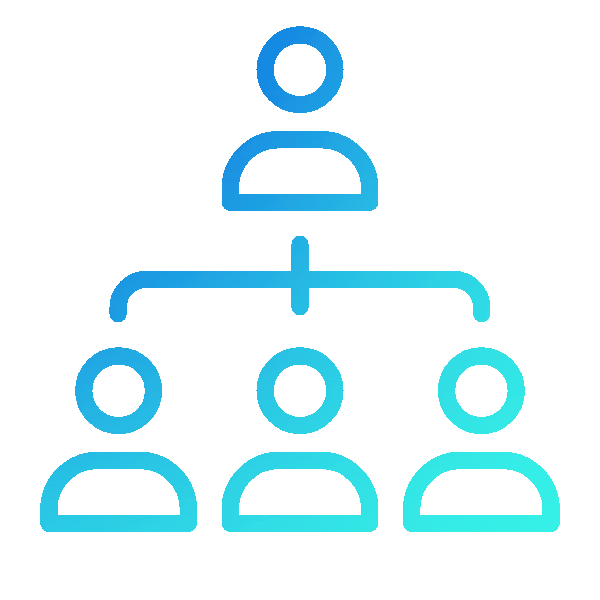The software development industry has undergone significant transformations over the past few years, with the convergence of various factors, such as the global pandemic (Covid-19) and advancements in artificial intelligence (AI). Amidst these changes, nearshore software development has emerged as a strategic approach for businesses to capitalise on the benefits of outsourcing while effectively managing remote teams.
The global outsourcing market is expected to reach $1.4 trillion by 2023. Nearshore software development is a major driver of this growth. In the fast-paced world of technology, UK businesses continuously seek innovative solutions to stay ahead of the curve. With the surge of nearshore software development, a realm that combines talent, cost-effectiveness, and proximity, UK companies are exploring global collaborations like never before.
10 Top Nearshore Software Development Countries for Global Businesses in 2023
Check out this awesome guide we’ve got for you; a deep dive into the top 10 countries for nearshore software development that global businesses should watch in 2023. We’ve loaded it up with real-deal insights and mind-blowing stats to keep you hooked!
1- Portugal: Bridging the Atlantic Tech Gap
Portugal’s skilled workforce and favourable tax regime are drawing global attention. Being part of the European Union, collaboration with Portuguese developers is seamless. With over 1,000 tech startups and an impressive 40% growth in IT professionals over the past five years, Portugal is rising as a collaboration hub. The Portuguese tech ecosystem continues to expand, making it an attractive destination for businesses worldwide.
2- Ireland: The Silicon Isle
Ireland is more than just a European tech powerhouse; it’s a global leader. The 12.5% growth in tech professionals in the past decade and a 31% increase in tech job vacancies demonstrate the nation’s thriving tech industry. English fluency, cultural similarities, and an impressive 96% tech workforce satisfaction rate make Ireland an alluring choice for businesses around the globe.
3- Spain: Iberian Innovation Hub
Spain’s booming IT ecosystem is on the radar of many international firms. Digital transformation investments soared to €4.8 billion in 2022, and with a growing number of software developers, Spain is positioning itself as a global nearshoring haven. The focus on AI and blockchain, backed by significant startup investments, adds to Spain’s appeal.
4- Poland: Engineering Excellence
Poland has emerged as a centre of engineering brilliance, boasting a 200,000-strong software development workforce. Its affinity for quality is reflected in the Global Innovation Index, and the recent report by NASSCOM, expecting a 10% industry growth in 2023, adds to its appeal. Other key elements are;
- Number of software developers: 300,000+
- Time zone: UTC+1
- Cultural proximity to Western Europe: High
- Tech talent pool: Diverse and skilled
5- Ukraine: Rising Tech Titan
Ukraine’s IT industry continues its ascent, growing by 20% annually. Housing 200,000 IT professionals and 4,000 tech companies, Ukraine is a hotspot for nearshore partnerships. With a focus on AI and machine learning, Ukraine has earned a spot among the top 30 AI countries globally. Other key elements are;
- Number of software developers: 285,000+
- Time zone: UTC+2
- Cultural proximity to Western Europe: High
- Tech talent pool: Diverse and skilled
6- Czech Republic: Innovation Oasis
The Czech Republic’s strategic location, skilled workforce, and strong economy make it a prime nearshore destination. With 40,000 IT graduates produced annually and a time difference of just 1 to 2 hours with other major European business hubs, it’s a place worth considering. Other key elements are;
- Number of software developers: 150,000+
- Time zone: UTC+1
- Cultural proximity to Western Europe: High
- Tech talent pool: Skilled and experienced
7- Hungary: Tech Renaissance
Hungary’s stability, educated workforce, and strong economy make it a compelling option. An impressive 35% annual growth in IT professionals and 1.3% of GDP investment in research and development highlight Hungary’s commitment to innovation. Moreover, Budapest’s thriving tech startup scene is adding to its potential.
8- Romania: Coding Culture
Romania’s educational system and affordability make it a growing nearshore destination. Romania’s 9.5% increase in IT professionals in the past year, focus on technical skills, and 8th position in the Global Talent Competitiveness Index reflect a vibrant tech culture that’s attracting businesses far and wide. Other vital elements are;
- Number of software developers: 200,000+
- Time zone: UTC+2
- Cultural proximity to Western Europe: High
- Tech talent pool: Diverse and skilled
9- Bulgaria: Tech Innovation Accelerator
Bulgaria’s skilled workforce and low cost of living make it appealing to global businesses. Impressive growth in IT professionals, a burgeoning startup scene, and a focus on blockchain and cybersecurity position Bulgaria as a growing tech innovation hub.
10- Lithuania: Baltic Tech Excellence
Lithuania’s blossoming tech industry is marking itself on the global map, with a remarkable 30% growth in IT professionals in the last five years. The country’s strategic location, 7th position in the European Innovation Scoreboard, and commitment to tech innovation offer a plethora of opportunities for global nearshore collaboration.
These are just a few of the many nearshore software development countries that businesses can consider outsourcing to in 2023. The best country for a particular business depends on its needs and requirements. However, all of the countries on this list offer a number of advantages, including:
- A large and skilled tech talent pool
- Competitive hourly rates
- Good English proficiency
- Comparable time zones
- Cultural Proximity to Western Europe
- Strong track record of success in outsourcing
Each of these countries offers unique attributes and advantages, providing an array of options for international businesses seeking nearshore partnerships in 2023. As the world evolves and technology advances, these tech hotspots give businesses opportunities to grow, innovate, and maintain a competitive edge in the global market. Whether it’s cost efficiency, technological innovation, or a blend of both, there’s a perfect fit for every business looking to harness the power of nearshoring.
Advantages of Nearshoring: US Outsourcing to LATAM
Nearshoring is the practice of outsourcing work to a company or individual in a country that is geographically close to the company that is outsourcing the work. In the case of US outsourcing to LATAM, the two regions are very close, with many countries in LATAM sharing a time zone with the United States. This makes it easy for US companies to collaborate with LATAM partners and to ensure that projects are completed on time and within budget.
When it comes to US outsourcing to LATAM, there are a number of factors that make it a good fit for nearshoring.
- First, the two regions are geographically close, which means that there is a relatively small time difference between them. This makes it easy for US companies to collaborate with LATAM partners and to ensure that projects are completed on time and within budget.
- Second, the United States and Latin America share a number of cultural similarities. This can make it easier for US companies to communicate and work with LATAM partners. This is especially important for projects that require a high level of collaboration and communication.
- Third, English is widely spoken in many countries in Latin America. This means that US companies can communicate with LATAM partners without the need for a translator. This can save time and money on communication costs.
As a result of these factors, US outsourcing to LATAM is a good fit for nearshoring. It can help US companies to reduce costs, improve quality, and gain access to a wider pool of talent.
Adapting Outsourcing Strategies in the Post-COVID Landscape
Outsourcing, which involves contracting specific business processes or tasks to third-party providers, has been a prevalent practice for many years. The COVID-19 pandemic has had a significant impact on various aspects of business, including outsourcing. As of my last knowledge update in September 2021, I can provide some insights into how outsourcing might evolve in the post-COVID-19 era. However, please note that the situation might have evolved since then.
1- Remote Work Emphasis
The pandemic forced many businesses to adopt remote work practices. Outsourcing, in many cases, aligns well with remote work, as companies can hire talent from around the world without requiring them to be physically present in the same location. Post-COVID, the emphasis on remote work might lead to continued interest in outsourcing to tap into a global talent pool.
2- Cost Efficiency and Flexibility
The economic impact of the pandemic has driven many companies to seek cost-effective solutions. Outsourcing allows businesses to access skilled professionals at a potentially lower cost than hiring full-time employees. It also offers flexibility, enabling companies to scale their operations up or down based on demand without the commitments of permanent hires.
3- Focus on Core Competencies
The pandemic highlighted the importance of focusing on core business functions. Outsourcing non-core activities such as IT, customer service, and accounting can help companies concentrate on their strengths and strategic initiatives while delegating routine tasks to specialised providers.
4- Supply Chain Resilience
The disruptions caused by the pandemic exposed vulnerabilities in global supply chains. Companies might reconsider their outsourcing strategies to enhance supply chain resilience. This could involve diversifying suppliers and partners across different geographic regions to mitigate the impact of future disruptions.
5- Data Security and Privacy
Data security and privacy concerns have intensified with increased remote work and outsourcing. Post-COVID, companies are likely to emphasise ensuring that their outsourcing partners adhere to stringent data protection standards and compliance regulations.
6- Hybrid Approaches
A hybrid approach to outsourcing might become more prevalent, wherein companies combine in-house and outsourced teams. This approach allows for greater control over critical processes while still benefiting from specialised expertise through outsourcing.
7- Ethical and Social Considerations
The Covid-19 pandemic has prompted discussions about labour conditions and fair treatment of workers. Companies might face increased scrutiny about the treatment of outsourced employees and may need to ensure that their partners uphold ethical and fair labour practices.
8- Technology Adoption
The pandemic accelerated digital transformation efforts. Post-COVID, companies might seek outsourcing partners that can provide cutting-edge technological solutions to enhance efficiency and competitiveness.
9- Reshoring
The pandemic has sometimes led companies to reconsider offshoring and consider bringing certain operations back in-house or closer to home. Reshoring could be motivated by the need for greater control, reduced transportation costs, and improved agility.
It’s important to note that the evolution of outsourcing in the post-COVID era will depend on various factors, including economic recovery, technological advancements, regulatory changes, and shifts in business priorities. Companies will need to carefully assess their specific needs and objectives to determine the most suitable outsourcing strategies for their circumstances.
Outsourcing in the AI Era: Unleashing Innovation and Efficiency
In the fast-evolving landscape of the AI era, outsourcing has emerged as a powerful strategy to harness the potential of artificial intelligence while optimising business operations. As companies explore new avenues to integrate AI into their workflows, outsourcing becomes a valuable tool to navigate the complexities of this transformative technology.
Outsourcing is becoming more popular than ever before. In fact, a recent report by Gartner predicts that the global outsourcing market will reach $342 billion by 2023. Here’s a look at how your outsourcing partner can help you with AI adoption across various facets of your business:
- Automating Repetitive Tasks: Outsourcing AI-powered automation can revolutionise routine tasks, freeing up human resources for more creative and strategic work.
- Predictive Analytics for Informed Decisions: By partnering with AI-focused outsourcing providers, businesses gain access to predictive analytics that aid in making well-informed decisions based on data-driven insights.
- Software development enhancement: Picking the right AI-powered tools for coding, pair programming, testing, monitoring, etc. can be tricky. A knowledgeable software partner should be able to guide you to set the right AI policies and select the right tooling that matches your needs and compliance requirements.
- Enhancing Customer Experiences with Chatbots: Outsourcing AI-driven chatbot development improves customer interactions by providing instant responses, personalised assistance, and seamless experiences.
- Optimising Supply Chain Management: Outsourced AI applications can optimise inventory management, demand forecasting, and logistics, enhancing supply chain efficiency and reducing costs.
- Personalising Campaigns: AI-powered outsourcing aids in analysing customer data to create tailored strategies, resulting in higher engagement and conversions.
- Fraud Detection and Prevention: Outsourcing AI-based fraud detection systems enhance security by identifying anomalies and patterns indicative of fraudulent activities.
- Financial Analysis and Risk Assessment: Outsourcing AI for financial analysis provides accurate risk assessment and helps in making informed investment decisions.
- And more.
Embracing AI through outsourcing comes with its own set of considerations. Ethical practices, data security, and the need for the right expertise when selecting an outsourcing partner become vital to successfully integrating AI into your business.
Key Factors to Consider When Choosing a Nearshore Software Development Partner
When choosing a nearshore software development partner, it is important to consider a number of factors, including the following:
- Skills and Experience of the Developers: Make sure that the developers you work with have the skills and experience to meet your needs. This includes having a deep understanding of your industry and the specific technologies that you need to use.
- Cost of Development: Nearshore development can be a great way to save money on software development costs. However, it is important to ensure you are getting good value for your money. This means comparing the costs of different nearshore partners and ensuring that you are getting the best possible price for the quality of work you need.
- Quality of the Work: Make sure that the work is of high quality and meets your expectations. This means clearly understanding your requirements and working with a partner committed to delivering high-quality work on time and within budget.
- Communication and Collaboration: It is important to be able to communicate and collaborate effectively with your nearshore development partner. This means having a clear understanding of each other’s cultures and working styles and being able to communicate effectively in both written and verbal form.
- The Cultural Fit: Make sure that the culture of your nearshore development partner is a good fit for your own culture. This means having similar values and working practices and being able to build trust and rapport with each other.
By carefully considering these factors, you can choose a nearshore software development partner to help you achieve your business continuity goals.
Guidance on Selecting a Nearshore Software Development Partner: Valuable Tips
- Get Recommendations From Trusted Sources: Ask your colleagues, industry peers, and suppliers for recommendations of nearshore development partners that they have worked with and would recommend.
- Do Your Research: Once you have a list of potential partners, do your research to learn more about them. This includes reading online reviews, checking their website, and contacting them to ask questions.
- Visit the Partner in Person: If possible, visit the nearshore development partner in person to get a better sense of their culture and capabilities. This will also give you a chance to meet the team and see their facilities.
- Negotiate a Contract: Once you have chosen a nearshore development partner, be sure to negotiate a contract that clearly outlines the scope of work, the timeline, the budget, and the terms of payment.
- Monitor the Project Closely: Once the project is underway, it is important to monitor it closely to ensure that it is on track and meeting your expectations. This includes regular communication with the development team and regular check-ins to review progress.
How AI is Changing the Outsourcing Landscape
The global AI market is expected to reach $390 billion by 2025. In addition to the advantages of nearshore outsourcing mentioned above, AI is also playing a major role in changing the outsourcing landscape. AI can automate many tasks that software developers typically perform, such as testing, debugging, and code generation. This can free up developers to focus on more creative and strategic work, and it can also help to reduce costs.
AI is also being used to improve communication and collaboration between onshore and offshore teams. For example, AI-powered translation tools can help to overcome language barriers, and AI-powered collaboration tools can make it easier for teams to work together on projects in real-time.
As AI continues to develop, it is likely to have an even greater impact on the software development outsourcing landscape. AI-powered tools and services will make it easier for businesses to outsource their software development needs and help improve the quality and efficiency of outsourced projects.
Applications of AI in Nearshore Outsourcing
AI is rapidly transforming the world of nearshore outsourcing, with businesses of all sizes looking to leverage its power to improve their business operations and achieve their goals. Here are some of the key applications of AI in nearshore outsourcing:
1- AI-Powered Quality Assurance
AI-driven testing tools can identify software defects faster and more accurately, leading to higher-quality products and quicker releases. For example, the AI-powered testing platform Applitools can identify up to 90% of software defects, which can save businesses millions of dollars in development costs.
2- Predictive Analytics
AI algorithms can analyse historical data to predict future trends, enabling businesses to make informed decisions and optimise resource allocation. For example, the AI-powered predictive analytics platform Sisense can help businesses to predict customer churn, identify new market opportunities, and optimise their supply chain.
3- Natural Language Processing (NLP)
Nearshore teams with NLP expertise can develop chatbots and virtual assistants to enhance customer interactions and support services. For example, the AI-powered chatbot platform Rasa can be used to create chatbots that can answer customer questions, resolve issues, and provide support.
4- Process Automation
RPA (Robotic Process Automation) can automate repetitive tasks, freeing up human resources for more strategic activities. For example, the AI-powered RPA platform UiPath can automate tasks such as data entry, invoice processing, and customer service.
5- Personalised User Experiences
AI can analyse user behaviour to deliver tailored experiences, improving customer satisfaction and engagement. For example, the AI-powered personalisation platform Segment can help businesses to personalise their website content, email marketing campaigns, and customer support.
Use of AI in Nearshore Outsourcing for Other Multiple Purposes
In addition to the key applications, AI is also being used in nearshore outsourcing for a variety of other purposes, such as:
a) Developing New Products and Services
AI can be used to analyse market data, identify trends, and generate new ideas. This can help businesses to develop innovative products and services that meet the needs of their customers.
b) Improving Customer Service
AI can be used to automate customer service tasks, such as answering FAQs and resolving simple issues. This can free up human customer service representatives to focus on more complex issues.
c) Improving Security
AI can be used to identify and prevent cyberattacks. This is important for businesses that outsource their software development to nearshore partners, as they may be more vulnerable to cyberattacks due to the geographical distance between the two parties.
As AI continues to develop, we can expect to see even more ways that it can be used to improve nearshore outsourcing. This will make it an even more attractive option for businesses of all sizes.
Here are some additional benefits of using AI in nearshore outsourcing:
- Cost savings: AI can help businesses save money on labour, development, and operational costs.
- Time savings: AI can help businesses to save time on development, testing, and deployment.
- Improved quality: AI can help businesses to improve the quality of their products and services by identifying and fixing defects earlier in the development process.
- Enhanced security: AI can help businesses to improve their security posture by identifying and preventing cyberattacks.
- Increased flexibility: AI can help businesses to be more flexible and responsive to changing market conditions.
Overall, AI is a powerful tool that can be used to improve nearshore outsourcing in a number of ways. Businesses that are looking to save money, improve quality, and increase flexibility should consider using AI in their nearshore outsourcing strategy.
The Road Ahead
So, what’s next? As we gaze into the crystal ball of the future, it’s clear that nearshore software development will continue to play a pivotal role in shaping business strategies. The integration of AI adds a layer of sophistication, efficiency, and intelligence to this model.
Companies looking to thrive in a constantly changing world must be adaptable, forward-thinking, and open to leveraging new technologies. Nearshoring, with its flexibility, cost advantages, and access to talent, provides the perfect platform for businesses to scale and innovate.
The fusion of nearshoring and AI represents more than a trend; it’s a transformative shift in how businesses operate and succeed. The pandemic may have been a catalyst, but the momentum is unstoppable. The time to embrace nearshore software development and AI is now, so buckle up; the future looks bright.
Revolutionise Your Approach with Zartis
Embrace the future of software development with Zartis. As a frontrunner in nearshoring solutions, we understand the dynamics of the post-COVID and AI era. Our expert teams harness AI’s power to drive innovation, and our seamless nearshoring process ensures efficiency and cost-effectiveness. From automating tasks to predictive analytics, we’ll guide you through the evolving landscape, transforming challenges into opportunities.
Elevate Your Vision Today
Experience the true potential of nearshoring with Zartis. Our bespoke solutions empower businesses to navigate the intricacies of software development in the post-pandemic era. Unleash AI’s capabilities through our expert teams and streamline your operations while reaping the benefits of nearshoring. Embrace the future; let’s revolutionise together! Connect with us to transform your software development journey today.





